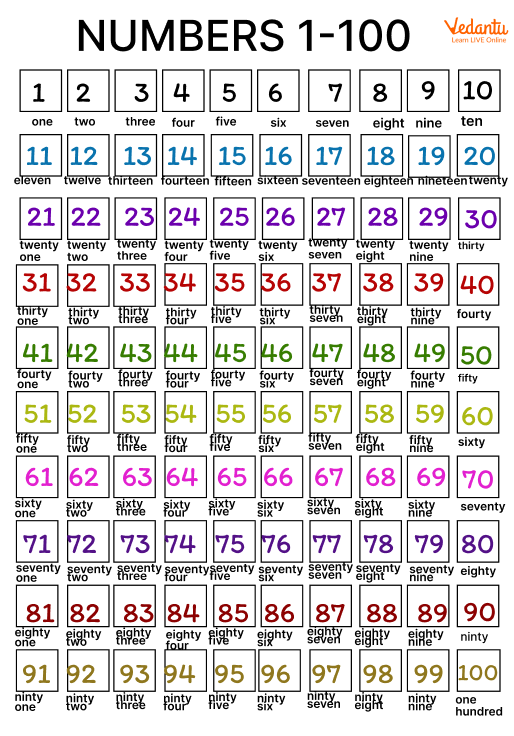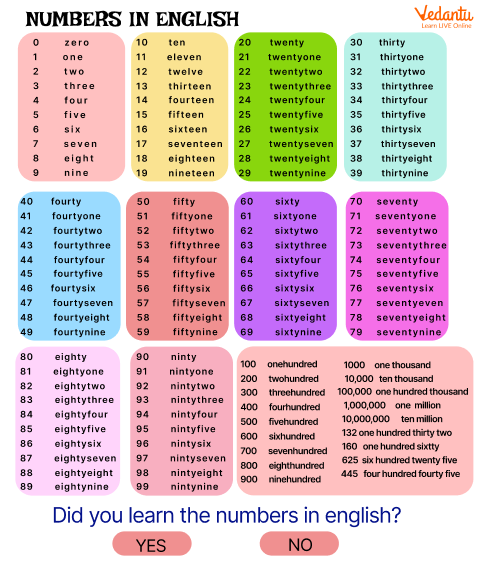




Introduction to the English Numbers
Learning numbers in English is an interesting activity, especially if we’ve planned it in a conventional way. We can indicate a number with an object or an item to represent that number. In this manner, we can help children understand such concepts easily and thoroughly. This will not only enable children to grasp the concepts, but also find them interesting to learn. In fact, there are several fun and engaging activities that can help children better understand numbers.
Let us look at numbers, decimals, fractions, and how to pronounce them in this article.
English Numbers
Pronouncing Numbers
Let us read the numbers in Cardinal and Ordinal form from 1-100 here.

Number Chart from 1-100

Numbers with the Multiple of 10 and From Hundred
Examples
A few examples of numbers used in sentences are given below.
He was the tenth person to win the award.
There are seventy-five people in the room.
He went to the US for the second time this year.
I must have asked you ten times to be quiet.
Seven hundred thousand people were left homeless after the war.
Reading fractions
When reading fractions, use the cardinal number for the numerator and the ordinal number for the denominator. If the numerator is greater than 1, make the ordinal number plural. With the exception of the number 2, which reads "half" when it is the denominator and "halves" when there are more than one, this rule applies to all numbers.
Reading Decimals
In English, read decimals aloud by pronouncing the decimal point as "point," then reading each digit separately. This is not how money is read.
Reading Percentages
In English, percentages are simple to read aloud. Simply say the number followed by the word "percent."
Conclusion
As compared to the other languages, numbers in English are more interesting and there are various ways in which parents or teachers can teach students the number concepts. Involving children in some activities enhances their understanding of the concept in an easier manner.
FAQs on Numbers in English
1. How to pronounce years?
In English, reading years is a bit of a challenge. In general, read the first two digits of a four-digit year as a whole number, then the second two digits as another whole number. This rule does have a few exceptions. Years in the first 100 years of a new millennium can be read as two two-digit numerals or as complete numbers with four digits. As millennia would be tricky to pronounce differently, they are always read as full numbers. New centuries are written as a series of hundreds. We don't use the word "thousand" when referring to years that are less than 1000 years old.
2. What are negative numbers?
The name of a negative number is preceded by "minus" or (American English) "negative" and the name of the matching positive number. As a result, 5.2 is also known as "minus five point two" or "negative five point two."











